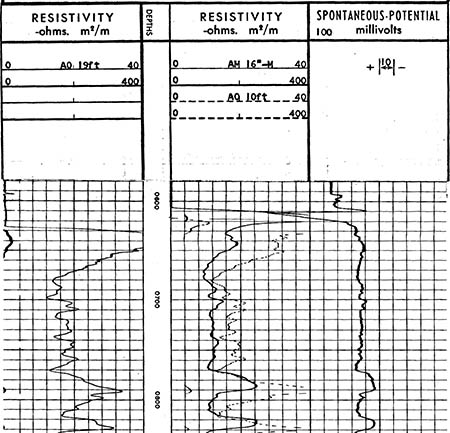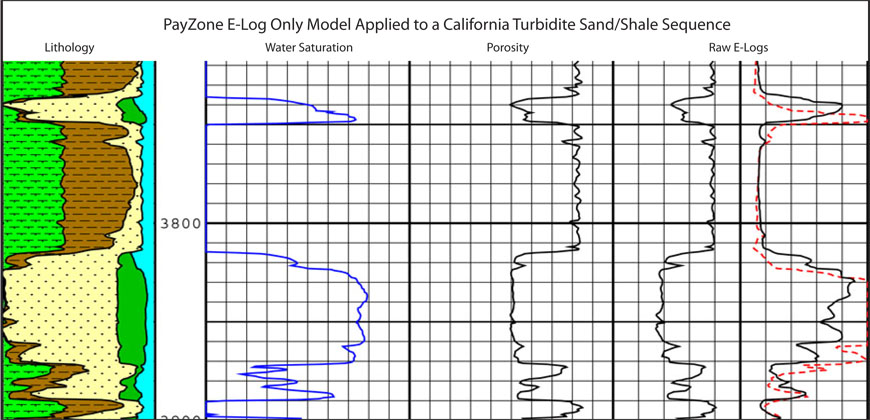
Old E-Logs Are a Valuable Data Source
There are more uses for old electric logs than just correlation - much more. Our staff is very experienced with E-logs, including their modern applications in the water well industry, and we offer a training course on electric log interpretation (please contact us for details). While old electric logs cannot be analyzed using the same automated methods we apply to modern logs, it is possible to derive some reservoir properties, such as clay volume and permeability, with customized computer models on a foot-by-foot basis. Other properties can also be estimated by the experienced analyst using a combination of art and science.
For an interesting example of how to read a rather obscure electric log header from 1954, please go here.
It is possible to go further with these logs. We have developed a geologically-based old E-log petrophysical interpretation model that we have applied in field studies to obtain reservoir properties used successfully in modeling. This approach works particularly well with 1950's vintage logs in turbidites, which are abundant in older California fields. Below is an example of results from our elog-only model.
Note that the "shales" are not shown with zero porosity - in this type of sequence they are typically mudstones with very low permeability but significant porosity. This model was calibrated to core data.
This model is applied by an experienced geologist/analyst who is very familiar with both the rocks and the response of the electric logs to reservoir conditions. There are usually a few modern porosity logs available in the vicinity of most fields, and from them we can calibrate an empirical model for lithology, porosity, and permeability. If no porosity logs are available, total porosity can be calculated as a function of depth. With some calibration point to start from such as core porosity, depth functions are usually accurate enough for the zone of interest. From total porosity and clay volume (based on the SP curve) we can estimate effective porosity. A reasonable permeability can often be obtained from the resistivity curves. Water saturation can be calculated in several ways. In most of our work, project goals included the determination of OOIP, which requires original Sw. Our preferred method to obtain this value is the application of a capillary pressure-based model referenced to permeability. Knowledge of formation water resistivity is not needed for calculation of capillary pressure Sw, which can be a great advantage if the original water chemistry is unknown and subsequent waterflooding has occurred. Alternatively, inversion models can be applied to the electric log curves to compute Rt, which can then be entered to a conventional water saturation model with the previously calculated porosity and clay volume.

